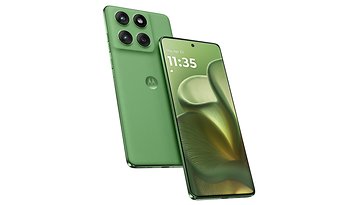The secret inner workings of the iris scanner


The iris scanner is a technology that has been around since the 1990s, although the idea of identifying people through the pattern of their iris dates back to the early 20th century. This technology is used today in security checks at some UK airports and even in smartphones. In this article we’ll walk you through how an iris scanner works.
How an iris scanner works
To sum everything up very quickly, the principle of this technology is basically to convert the iris mapping into one or many numbers. The iris is the area of color that surrounds the pupil, the black area that lets light into the eye. With this map, it is possible to calculate the polar coordinates of each irregularity and convert them into concentric circles, which are centered on the coordinates of the pupil. The coordinates of each irregularity are unique for each person.

In order to convert the colorful part of the eye into a map, a specific tone is determined. In the Galaxy S8, for example, it is not a color that can be seen in the human eye because it’s an infrared color. With this infrared index, the S8 is able to recognize a person from 200 characteristic points, instead of the 40-60 points used for fingerprints.

Iris scanner recognition is about 10 times safer than fingerprint scanning. As we read recently, fingerprints can be easily copied, but things are much more complicated when it comes to the iris, which is why it can offer a higher level of security.
We should not confuse this technology with a retinal scanner, which needs to approach the eye very closely. The iris scanner works when the phone is several inches from the face, in a natural position. You just need to make sure to remove your glasses and in some cases contact lenses, especially if they are colored.
On the Galaxy S8, the iris scanner works pretty well and relatively quickly (if you don't have glasses or contacts). Simply press the power button, place your eyes in the circles on the screen, and then the device is unlocked. In short, with the S8, you only have to look at your phone to unlock it.
Devices that were already using or imitating this technology
The iris scanner is the breakthrough in biometric security that took off in 2016, although there had already been some attempts in the past.
The Lumia 950 XL (released in October 2015), the smartphone with a PC soul that also integrates an excellent camera, offers a system of unlocking with an iris scanner. It may be slower than the Note 7, but it is able to recognize a user at night or when they’re wearing glasses.
Also in 2015, but just before the Lunia 950 XL, the first smartphone with an iris scanner was launched in Asia, the Fujitsu Arrows NX F-04G with Android Lollipop. This device was only sold in Japan.

Before iris scanners, some devices used an unlocking system based on EyeVerify. This is not a scanner. It was technology that is based on facial recognition, which measures the distance between the eyes and the position of the eyebrows. A good example of a device using EyeVerify is the Idol 3, although this system was not very efficient, and was still years away from the Note 7’s scanner.
So what do you all think of iris scanners?













